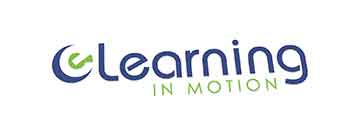With tons of resources out there on how to conduct a successful webinar it would a reasonable approach to follow those suggestions for webinars for eLearning, I believe that is a mistake. See, a webinar for promotional or informative purposes does not require a lot of planning and design. Sometimes, the only thing that gets prepared is the slides being presented during the live session.
But if you want to use those recordings for other products you can sell as online courses, a regular webinar set up will not be enough. You will have to sit down and create a design plan for instruction and production, which should lead to an eLearning course that will work (that is, where your learners will learn something) once the whole packaged course is finished and released (by the way, I would suggest that you give to course to a few test subjects that could give you a fast feedback for another design loop of troubleshooting and enhancement.
Some part of the design process should deal with the creation of material and curation of resources that attendees could cover before showing up to the actual webinar. This is just like the readings that college students cover before attending the actual lecture. The idea is that after reading the material, they would be more informed of the subject and whatever questions that might come up during the reading could be asked to the instructor during the lecture. But with eLearning we have to go a step further. The resources do not have to be reading materials alone. Incidentally, I have many times asked myself, while conducting or hosting webinars, why is it that attendees would stay silent during the Q&A part, and not ask many questions to the presenter? There are many reasons for this, and it is my experience that one of the reasons is that they don’t know what to ask. Below are some suggestions on what other learning objects you could create to prepare your webinar attendees for the actual event so that they can ask pertinent questions during the live session,
- Post some reading material (short articles, papers, sections of books and so on),
- Post some link to web resources such as blogs, wikis, online papers,
- Create a social media account for them to post their thoughts (seed the discussion with prompt questions), you could use Facebook, Google+, LinkedIn, or create a hashtag in Twitter, or create a discussion forum in your website, if you can,
- Create online activities such as games, polls, interactive websites (with animations, simulations, short games, apps),
- Post links to short videos related to the subject to be discussed.
These are some ideas but in fact there are other things you could use as a warm-up for the webinar. At eLearning in Motion we can help you in the design process of your eLearning program that could cover pre-webinar learning objects that can later be integrated to the final online course, this will give context to the recorded webinar once it is published in the final eLearning course.
As always, find us in social media. You can share this content by using the buttons below. If you have questions and comments, use the form at the bottom of this page, or contact me directly, and I will get back to you as soon as I can. Thank you for reading this post.

